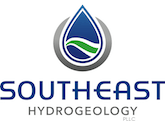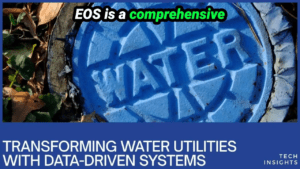Managing water infrastructure in small utilities can often feel like an overwhelming challenge, especially when traditional methods such as paper logs, spreadsheets, or even relying on memory are still the norm. However, digital transformation doesn’t have to be complicated or costly. By embracing simple digital tools, you can streamline operations, improve service reliability, and safeguard your water system’s future. This guide walks you through five practical steps to kickstart your digital journey and transform your water infrastructure efficiently and effectively.
This article is inspired by expert insights from The Groundwater Guy, who breaks down how small water utilities can take manageable, concrete actions to digitize their operations without the need for expensive or complex technology.
Step 1: Assess What You Have – Understand Your Current Water Infrastructure Systems
The first step on your digital transformation journey is to take a detailed inventory of your existing systems and processes. Many small water utilities still track critical information such as assets, maintenance, and water quality using manual methods. This can lead to lost data, errors, and inefficient workflows. Moreover, when experienced personnel retire or leave, their knowledge often leaves with them, creating gaps that digital tools can help prevent.
Start by making a comprehensive list of your current practices:
- Asset Tracking: How do you currently record the location and status of pipes, pumps, valves, and other infrastructure?
- Maintenance Records: What system do you use to document repairs, routine maintenance, and inspections?
- Water Quality Data: Where and how are water quality test results stored and accessed?
As you review these areas, identify what is working well and what causes frustration. Are records difficult to locate? Is sharing information with your team inefficient? These are clear indicators that transitioning to digital recordkeeping could significantly improve your operations.

Step 2: Set Simple Goals – Focus on What Matters Most
Once you understand your current state, the next step is to set achievable, focused goals that address your most pressing challenges. Digital transformation doesn’t have to happen all at once—starting small can yield meaningful improvements and build momentum.
Consider what you want to improve first. Possible goals could include:
- Better tracking of maintenance activities to prevent equipment failures.
- Improved asset location visibility to quickly respond to issues.
- Receiving timely alerts for water quality problems to ensure safety.
Choose one or two goals that will make a real difference for your team and system reliability. By narrowing your focus, you can avoid overwhelm and demonstrate early wins that encourage continued adoption of digital tools.

Step 3: Choose the Right Tools – Embrace Simple, Effective Digital Solutions
Small water utilities don’t need to invest in expensive or complicated software to reap the benefits of digital transformation. Many affordable and easy-to-use tools are designed specifically for smaller operations and can be maintained without advanced IT skills.
Here are some digital solutions to consider:
- GIS Mapping: Use simple geographic information system (GIS) software to map the locations of your water infrastructure assets. This visual tool helps you quickly identify and access pipes, valves, pumps, and other critical components.
- Digital Work Orders: Replace paper forms with digital work orders to track maintenance, repairs, and inspections. This improves record accuracy and makes it easier to monitor progress.
- Cloud Storage: Store important documents, reports, and data in the cloud. Cloud storage provides secure, centralized access for your team anytime, anywhere—even on mobile devices.
- Dashboards: Implement simple dashboards to display key metrics such as water quality indicators or system status at a glance. You can also integrate data from SCADA (Supervisory Control and Data Acquisition) systems for real-time monitoring.
By selecting tools that are user-friendly and fit your budget, you can transform your water infrastructure management without the fear of technical complexity or high costs.
Step 4: Train Your Team – Ensure Everyone Is Comfortable and Confident
Introducing new digital tools requires proper training to ensure your team can effectively use them. Without adequate support, even the best technology can fail to deliver results.
To facilitate smooth adoption:
- Conduct short, focused training sessions that cover essential features and workflows.
- Provide simple, clear instructions and documentation for reference.
- Encourage team members to ask questions and share tips to foster a collaborative learning environment.
Investing in training helps build confidence and ensures the new systems are used correctly, maximizing their benefits and reducing frustration.
Step 5: Build on Your Success – Expand Digital Efforts and Continuously Improve
After mastering the basics, look for additional opportunities to digitize and improve your operations. Digital transformation is an ongoing process, and expanding gradually allows you to adapt based on your team’s experience and changing needs.
Some areas to consider for future digital initiatives include:
- Customer Communication: Use digital platforms to improve interaction with your customers, such as notifications about service interruptions or billing updates.
- Leak Detection: Incorporate digital sensors and analytics to identify leaks quickly and reduce water loss.
Regularly review your progress and adjust your approach as necessary. This iterative process ensures your water infrastructure remains resilient, efficient, and ready to meet future challenges.

Why Digital Transformation Matters for Small Water Utilities
Digital transformation is more than just adopting new technology—it’s about making your water infrastructure smarter, more efficient, and more reliable. Traditional methods like paper logs and spreadsheets are prone to errors, time-consuming, and vulnerable to knowledge loss when experienced staff retire or move on.
By implementing digital tools, you can:
- Organize Data Efficiently: Centralized digital records make it easier to access and update information.
- Spot Problems Early: Real-time monitoring and alerts help prevent system failures and water quality issues.
- Make Better Decisions: Data-driven insights enable proactive maintenance and resource allocation.
- Retain Institutional Knowledge: Digital records preserve critical information beyond individual employees.
- Enhance Team Collaboration: Cloud-based tools allow seamless information sharing regardless of location.
For small water utilities aiming to improve service reliability and operational efficiency, these benefits translate into tangible cost savings, improved customer satisfaction, and a stronger foundation for future growth.
Getting Started: Your Digital Journey Begins Today
Digital transformation doesn’t have to be daunting. By following these five key steps—assessing your current systems, setting simple goals, choosing the right tools, training your team, and building on your success—you can modernize your water infrastructure one manageable step at a time.
Remember to keep your approach practical and team-oriented. Involve everyone in the process, celebrate early wins, and continuously seek ways to improve. The result will be a more resilient, efficient water utility capable of meeting the demands of today and tomorrow.
Start your digital transformation journey now and watch your operations improve with each digital step.


